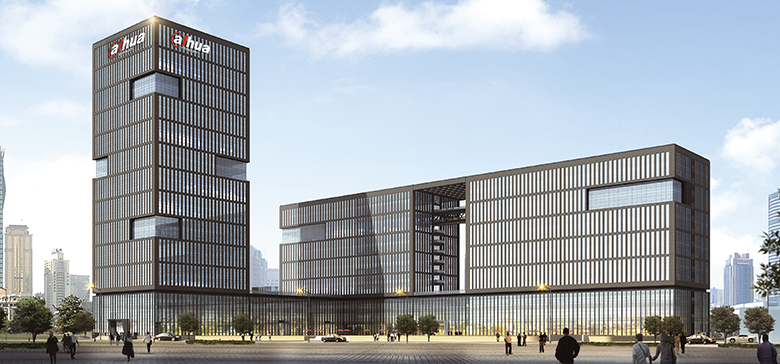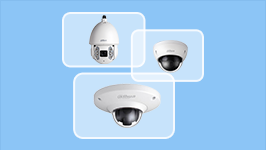IVE-DP8000-TS2-1000
Dahua Intelligent Management Server
> Supports the unified management of algorithms. Multiple types of algorithms can be stored in algorithm storehouses, which retain the capabilities of the algorithms within them. You can view details on algorithm packages and perform operations on them, such as uploading, deleting, enabling, and disabling.
> Computing resources, such as CPU, memory, and various parsing and computing cards, can be allocated and centrally scheduled based on service requirements. This approach helps eliminate disparities between hardware and provides a unified resource pool.
> The system not only supports the unified management and flexible allocation of services about human, vehicle and metadata, but it also comes with a variety of algorithms built into it. It provides a unified call interface to the application side and offers the option to select multiple functions at the same time.
> With cluster management, you can manage multiple service modules, and enjoy access to non-stop services through cluster scheduling even if errors exist in some of the nodes. The service load of each node can be adjusted based on the service load.
> Collects and manages information of service registration and configuration, and provides the unified O & M portal and the automated O & M module.
> Supports authentication management of computing power.
> With resource management, the system can integrate and manage fragmented idle computing power, and release the idle computing power resources for other analysis tasks, improving the utilization rate of idle hardware resources.
> Service platforms can specify the algorithm for task analysis. The intelligent view engine allocates computing power and schedules tasks.
> Schedules algorithms across different types of architecture. The algorithms easily adapt to 2 or more architectures at the same time, such as the arm and x86 architectures.
System
Main Processor
Two 12 C/24 T X86 processors, 2.1 GHz
Operating System
Linux OS
Memory
Two 32 GB DDR4 memory modules with up to 32 slots
Disk
One 2.5" 480 GB SSD and two 3.5" 4 TB HDDs with up to 8 slots.
Port
Network Port
4 × 1000 Mbps self-adaptive network ports
USB
2 × front USB2.0 ports and 2 × rear USB3.0 ports
VGA
1 × VGA port
Others
1 × RJ-45 management network port
General
Power Supply
100–127/200–240 VAC, 60/50 Hz, 12/8 A
Power Redundancy
Dual
Power Consumption
Working (all HDDs connected): ≤660 W (2,252 BTU/h)
Operating Temperature
+10 °C to +35 °C (+50 °F to +95 °F)
Operating Humidity
20%–80% (RH), non-condensing
Storage Temperature
–40 °C to +60 °C (–40 °F to +140 °F)
Storage Humidity
5%–95% (RH), non-condensing
Gross Weight
27 kg (59.52 lb)
Net Weight
20.83 kg (45.92 lb)
Product Dimensions
794.0 mm × 446.0 mm × 87.8 mm (31.26" × 17.56" × 3.46") (D × W × H)
Packaging Dimensions
1000 mm × 600 mm × 260 mm (39.37" × 23.62" × 10.24") (D × W × H)
Installation
Standard 19" rack installation with guide rail
Optional
Product Type
Hardware
Computer Version Intelligent Engine
Resource Management
Supports allocating computing resources, including CPU, memory, GPU and other hardware resources. The unified management of computing resources is also supported to provide computing resources for the analytical system. Computing resources can be centrally scheduled based on service requirements, to eliminate hardware resource differences and externally provide a unified resource pool. Supports monitoring the registration process and the running status of computing resources. You can also perform operation and maintenance as needed. Virtualizes computing cards into multiple fragments, and provides refined control of computing resources.
Service Scheduling
The system not only supports the unified management and flexible allocation of algorithms, but it also comes with a variety of algorithms built into it. It provides a unified call interface to the application side and offers the option to select multiple functions at the same time. Schedules algorithms across different types of architecture. The algorithms easily adapt to 2 or more architectures at the same time, such as the arm and x86 architectures.
The supported options are: Face recognition, license plate recognition, pedestrian recognition, human metadata, and motor-vehicle and non-motor vehicle metadata.Intelligent Task Scheduling
Manage analysis and retrieval tasks, and execute strategies for different tasks through resource scheduling modules and task scheduling strategies. Adjust task strategies based on the actual workload and task priorities, and assign intelligence analysis tasks to corresponding analysis engines for processing.
Cluster Management
With cluster management, you can manage multiple service modules, and enjoy access to non-stop services through cluster scheduling. The service load of each node can be adjusted based on the service load.
Network Authentication Management
Conveniently authorize algorithms and the number of cards for computing power servers through the network authentication box.
Third-Party Algorithm Access
Manages third-party algorithm access. The system provides a standard interface for connecting third-party algorithms to the algorithm warehouses of intelligent view engine. You can allocate and load third-party algorithms to computing resources to realize algorithm instantiation. Service platforms can even specify the algorithm for task analysis. The intelligent view engine allocates computing power and schedules tasks.















